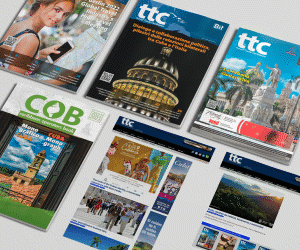By Frank Martin
The global tourism industry eagerly awaits the crucial moment when Chinese return to their international holidays.
At that time the “Chinese magic” will become a master key back to normality of the branch that has been highly mistreated by Covid-19.
Good news has drawn great attention about re starting China as a source market for tourists. A Chinese agency disclosed that when the vaccination rate in the Asian giant exceeds 85% of the immunized population, its borders will be open.
This could happen in early 2022, according to the Chinese Center for Disease Control and Prevention,
The current epidemic control measures against COVID-19 in China have gained a lot of ground on producing enough vaccines and inoculating people, Gao Fu, director of the Center for Disease Control and Prevention, told reporters.
The attention of tourism destinations to what is decided in China is clearly justified by the statistics in 2018 and 2019 on Chinese travelers.
In 2018, a total of 149.7 million Chinese traveled abroad compared to only 10 million who did so in 2000. In addition, for China the statistics represented an increase of 14.7 percent compared to 2017.
The Asian nation is the main source of tourists in the world. It is not only a matter of numbers but also of money. In addition, they are the highest spenders on their vacations.
News about itare not just guesswork. The national Olympic authorities have already set a date for the opening of Beijing’s Olympic villages for the winter Olympics next year.
The opening and the epidemiological risks of this winter sport event that will bring together some 7,500 people are already planned. Beijing 2022 will activate a “bubble” mechanism with restrictions on the movement of athletes and other participants.
Experts consider that moment as the definitive foretaste of the lifting of the Chinese lockdown.
Is China eager to encourage its tourists to travel the world?
The answer to that question requires studying the current Chinese market and also its numbers.
According to data compiled by the UN World Tourism Organization, Chinese tourists spent $ 254.6 billion on overseas travel in 2019.
If China’s border restrictions are extended a favored will be the domestic market.
According to forecasts answer the confined tourists to national borderrs give no choice but to shift their interest to national attractions, and the country’s burgeoning cultural travel industry is ready to rise to the challenge.
A Chinese publication stressed that small groups of between 10 and 20 people have appeared in the middle of the pandemic to visit those magical places.
“There are more than nine million international regular travelers in China, and many of them eagerly seek in-depth and thematic tourism products with a high price as alternatives” publication added.
There are also elements on the balance pan that measures the chances in China between domestic and foreign tourism.
Experts who defend the international option maintain that the increase in visitor numbers inevitably raises concerns about preservation of national ancient sites and the safety of their cultural artifacts.
An indisputable point in favor of international trips is the one that describes the great Chinese curiosity to see the world.
Latin America and the Caribbean are not yet part in massive terms of the expansion of Chinese tourists, but specialists suggest that they will soon be.
Destinations in that part of the world share the anxiety of the global entertainment industry over the arrivals of Chinese on vacation.
In 2017, of the 30 million of those Chinese citizens who traveled the world, only 1.3 million arrived in South and Central America and the Caribbean.
Statistics indicate that the regional nations that received the highest number of visitors of that nationality in 2017 were Argentina, Brazil, Chile, Cuba and Mexico.
Some South American countries, among them Uruguay, a few years ago devised an air transport agreement in order to offer Chinese vacationers several destinations in a single offer.
The idea was to compensate the very long trip that a Chinese tourist must make when he comes to America with multiple visits for each excursion.
In 2019 Cuba launched a tourist campaign called “Destination Cuba.” in order to promote bilateral tourism cooperation and attract more Chinese visitors, and reached agreements with Beijing to build Chinese hotels in Havana and promote culinary offerings in accordance with Chinese traditions.

MORE NEWS











